Question from Julie S.:
Were anti-lock brakes really made for airplanes first? If so, who got the idea to put them on cars & when was it first done successfully (for consumers to use)?
Thanks, Geek!
-Julie
Hello Julie.
Yes, the first anti-lock brakes were made for airplanes. They were developed for use in planes by a French airplane and automobile builder, Gabriel Voisin, in 1929.
In 1958, a motorcycle was used to test a version of anti-lock brakes. The test was a success and showed that the new brakes reduced stopping distances on slippery surfaces and stop skidding. But the motorcycle company saw no future in anti-lock brakes and did not invest in the idea.
In the 1960s, completely mechanical brakes were used in racecars and an experimental all wheel-drive Ford. The mechanical system was very expensive and not reliable.
In 1971, a computerized system was introduced. Chrysler began producing its Imperial brand automobile with a computerized, three-channel, four-sensor all-wheel ABS named “Sure Brakes.” The same year General Motors offered the “Trackmaster” rear-wheel only ABS as an option on their rear-wheel drive Cadillacs.
In 1978, the Mercedes-Benz S-Class were produced with a new electronic 4-wheel multi-channel anti-lock brake system. These brakes were very similar to the anti-lock brakes found in modern cars.


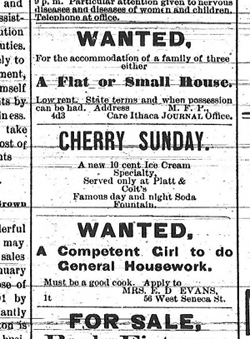 On Sunday, April 3, Google celebrated the anniversary of the first ice cream sundae with one of its famous Google Doodles. But the invention of the sundae celebrated by Google is only one of the stories about how the ice cream treat came to exist. For years, there has been an ongoing debate about how and where the sundae was invented.
On Sunday, April 3, Google celebrated the anniversary of the first ice cream sundae with one of its famous Google Doodles. But the invention of the sundae celebrated by Google is only one of the stories about how the ice cream treat came to exist. For years, there has been an ongoing debate about how and where the sundae was invented.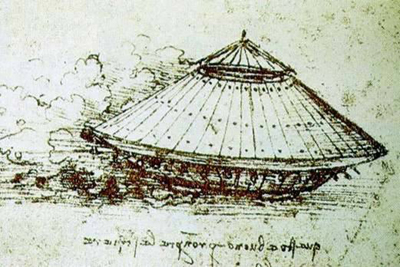
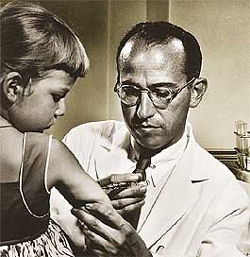 Polio was once a disease feared each summer by parents and children living in cities throughout the world. Epidemics of the disease were reported during the summer season starting in 1910. The polio epidemic of the summer of 1952 was the worst in the history of the United States. About fifty-eight thousand cases were reported with 3,145 deaths and 21,269 children left with some level of paralysis. Luckily, research was being done to develop a vaccine for this children’s illness.
Polio was once a disease feared each summer by parents and children living in cities throughout the world. Epidemics of the disease were reported during the summer season starting in 1910. The polio epidemic of the summer of 1952 was the worst in the history of the United States. About fifty-eight thousand cases were reported with 3,145 deaths and 21,269 children left with some level of paralysis. Luckily, research was being done to develop a vaccine for this children’s illness.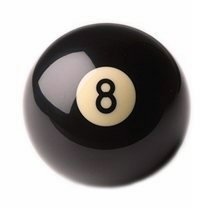 The first thermoplastic was exhibited in 1862 at the London International Exhibition. Parkesine was invented in 1855 in London by Alexander Parkes. Parkesine was an organic material made by dissolving cellulose nitrate in solvent. The material could supposedly do everything that rubber could do only it was cheaper. In 1866, Parkes formed the Parkesine Company to produce his plastic. It was not a commercial success though because it was expensive, easily cracked and highly flammable.
The first thermoplastic was exhibited in 1862 at the London International Exhibition. Parkesine was invented in 1855 in London by Alexander Parkes. Parkesine was an organic material made by dissolving cellulose nitrate in solvent. The material could supposedly do everything that rubber could do only it was cheaper. In 1866, Parkes formed the Parkesine Company to produce his plastic. It was not a commercial success though because it was expensive, easily cracked and highly flammable.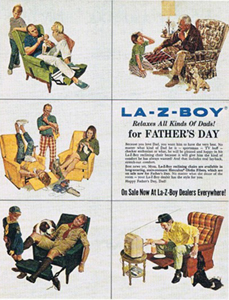 On March 24, 1927, two cousins, Edward Knabusch and Edwin Shoemaker, left their steady, secure employment to start a furniture company. Knabusch was a woodworker and Shoemaker was a farmer. Shoemaker became interested in woodworking after learning about all of tools Knabusch used. They began building furniture in Knabusch’s father’s garage for their new company, the Kna-Shoe Manufacturing Company. With Shoemaker’s building talent and Knabusch marketing skills, the company began to grow.
On March 24, 1927, two cousins, Edward Knabusch and Edwin Shoemaker, left their steady, secure employment to start a furniture company. Knabusch was a woodworker and Shoemaker was a farmer. Shoemaker became interested in woodworking after learning about all of tools Knabusch used. They began building furniture in Knabusch’s father’s garage for their new company, the Kna-Shoe Manufacturing Company. With Shoemaker’s building talent and Knabusch marketing skills, the company began to grow. Horace Wells first witnessed the effects of laughing gas in 1844 when it was given to him by a member of a traveling circus. He would then become the first patient to be operated on under anesthesia. He had a tooth pulled by an associate. He later began using the gas on his own dental patients. He never attempted to patent the procedure because he believed the pain relief should be available to all.
Horace Wells first witnessed the effects of laughing gas in 1844 when it was given to him by a member of a traveling circus. He would then become the first patient to be operated on under anesthesia. He had a tooth pulled by an associate. He later began using the gas on his own dental patients. He never attempted to patent the procedure because he believed the pain relief should be available to all.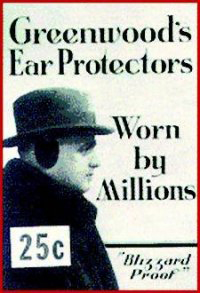 Chester Greenwood was an avid ice skater who lived in bitterly cold Maine. He attempted to keep his ears warm while skating using a scarf. But the bulky and itchy scarf he wrapped around his ears was unsuccessful. He needed to find a better way to stay warm while skating. At the age of 15, he made two circular hoops from wire and asked his grandmother to sew beaver fur and velvet on them. He held his two fur covered loops together with a steel band that created a headband. His new contraption was more much successful in keeping his ears warm.
Chester Greenwood was an avid ice skater who lived in bitterly cold Maine. He attempted to keep his ears warm while skating using a scarf. But the bulky and itchy scarf he wrapped around his ears was unsuccessful. He needed to find a better way to stay warm while skating. At the age of 15, he made two circular hoops from wire and asked his grandmother to sew beaver fur and velvet on them. He held his two fur covered loops together with a steel band that created a headband. His new contraption was more much successful in keeping his ears warm.